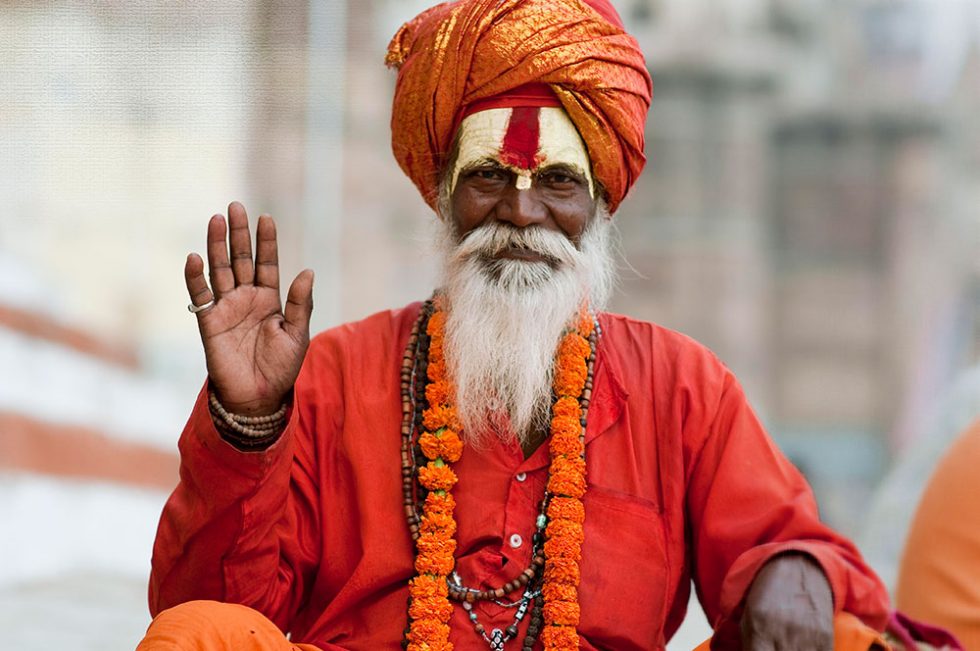Have you wondered about those man in India, usually dressing orange clothing, with a big beard, attracting thousands of photos every day, without making a fuss, just smiling and, sometimes, asking for a few rupees in return? Those men are the Sadhus, sacred men devoted to the immaterial world.
Every holiday attracts tens of millions of pilgrims from all over India and offers an excellent opportunity to confront the country’s fascinating diversity.
Of those pilgrims, it’s probably the sadhus who are the most interesting. Whereas typically in India you’ll encounter many solitary sadhus on a regular base, the Khumb Mela attracts them by the thousand.
A Naga Sadhu is a sacred man in a country where holiness sometimes means to live in a cave without food or to sit motionless for many hours without eating.
Or generally go around doing things that require an incredible amount of stubbornness, like standing or walking around with one hand in the air for a long time.
The Sadhu is believed to be like a candle in the center from the windless room, whose flame, immune to the stirrings of desire, flickers firmly.
Putting it simply, Naga Sadhus have renounced the material world to lead an aesthetic life.
They seek to achieve moksha, liberation from the cycle of birth and death, meditating regularly and contemplating Brahman, the causeless, immortal, immutable, infinite, immanent, transcendental reality of the universe.
Their lifestyle is rugged.
Many Sadhus get up well before dawn to bathe in the icy streams of the mountain of their hermitage before settling down in the absence of daily luxuries, keeping only in lasting prayers and meditations.
Naga Sadhus can be found living together in ashrams, or alone in caves.



